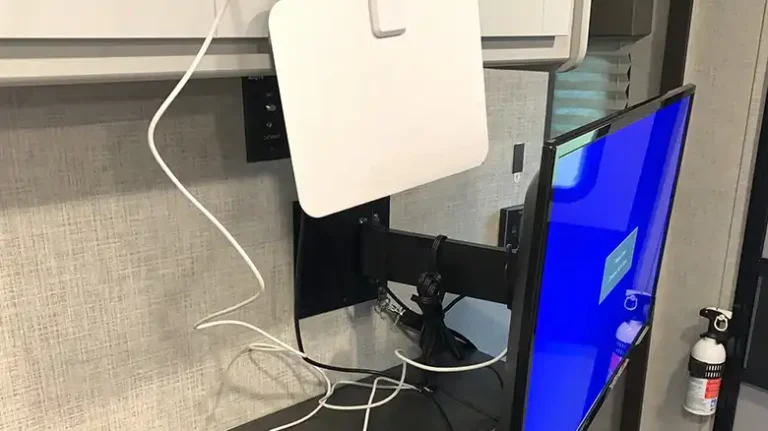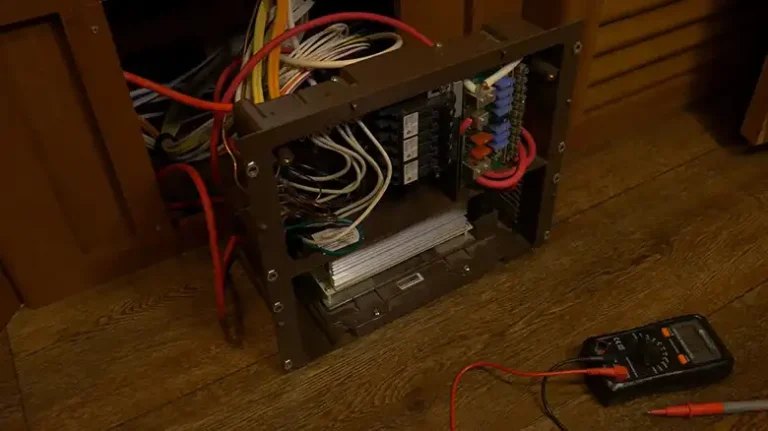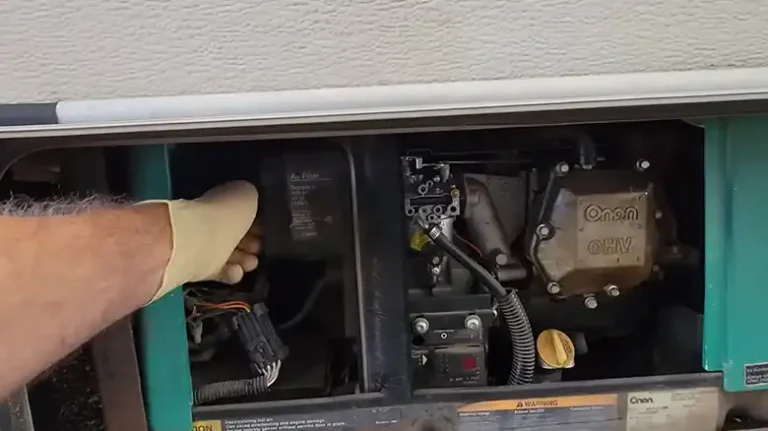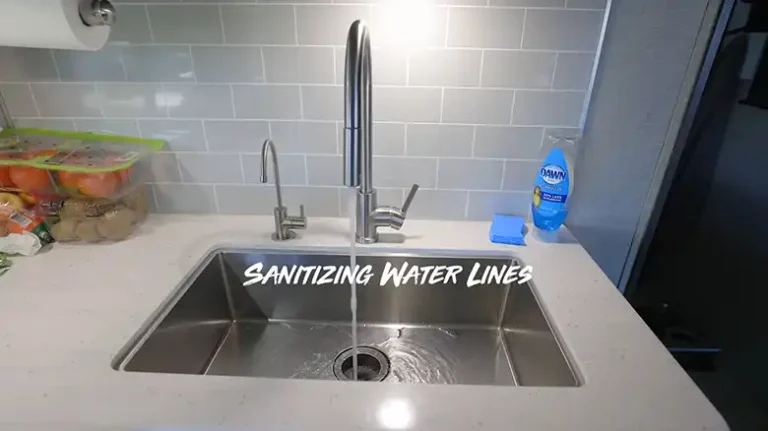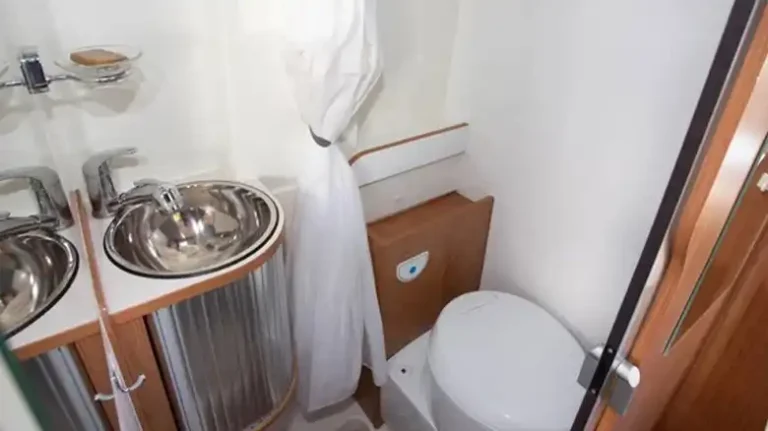Can I Use Drano In My RV Toilet? Is It Good?
As an RV owner, I’ve learned that a clogged toilet can ruin a camping trip. When I started RVing, I used Drano to quickly clear clogs like at home. However, RV plumbing is very different. Harsh chemicals in Drano damage plastic pipes, valves and seals. This led me to ask: is Drano safe for RV toilets? I’ve found RV toilets need special care and products. In this article, I’ll share maintenance tips without using dangerous drain cleaners.
Through experience, I learned RV toilets need special preventative maintenance and products. Strong chemical drain cleaners may seem convenient, but should never be used. Thankfully, with the right techniques and RV-safe products, clogs can usually be prevented or removed safely without harsh chemicals. In this article, I’ll share what I’ve learned about properly maintaining and unclogging an RV toilet without dangerous drain cleaners.
For fellow RV enthusiasts facing similar toilet troubles, understanding the compatibility of Drano with RV systems is important. Alternatives and preventive practices can be the key to trouble-free travels. So, let’s explore together the difficulties of using Drano in RV toilets, ensuring that every journey on the open road is as smooth and enjoyable as it should be.
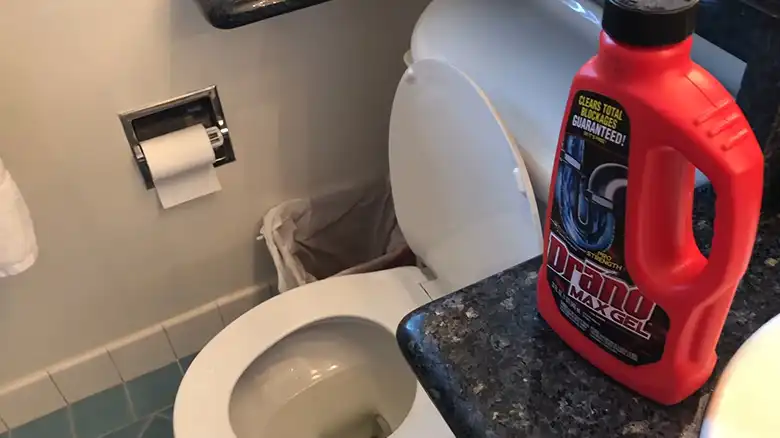
How RV Plumbing System Works
RV plumbing systems differ significantly from residential plumbing. RVs have compact, specialized plumbing setups designed to handle the unique challenges of mobile living. It’s crucial to understand these differences to make informed decisions about maintenance and repair.
Residential vs. RV Plumbing
Residential plumbing systems are stationary and use larger pipes, while RV plumbing is compact, utilizing smaller pipes and components. RV plumbing systems are designed to be lightweight, flexible, and efficient to accommodate the mobile nature of RVs.
| Aspect | Residential Plumbing | RV Plumbing |
| Size of Pipes | Larger pipes | Smaller pipes |
| Flexibility | Less flexible | More flexible |
| Design | Stationary | Mobile-friendly |
| Materials | Standard materials | Lightweight materials, often plastic |
Importance of Compatibility
Using products compatible with RV plumbing materials is essential. The wrong chemicals can damage seals, pipes, and other components, leading to costly repairs. RV owners must choose cleaning and maintenance products specifically formulated for their unique plumbing systems.
Risks of Using Drano in RV Toilets
Using Drano in an RV toilet poses potential risks and concerns. The chemicals in Drano can interact with the materials used in RV plumbing systems, leading to damage. Specific components, such as rubber seals and plastic pipes, may be adversely affected. Improper chemical use can result in expensive repairs and compromise the overall functionality of the RV plumbing.
1. Potential Risks and Concerns
Using Drano in an RV toilet carries potential risks and concerns that RV owners should be aware of:
Chemical Compatibility: Drano contains powerful chemicals designed for household plumbing systems. However, the materials used in RV plumbing systems may not be compatible with these chemicals, leading to adverse reactions and damage.
Weakening of Rubber Seals: Drano’s potent formula can weaken and deteriorate the rubber seals commonly found in RV toilets. This deterioration may result in leaks and compromise the effectiveness of the toilet’s flushing mechanism.
Corrosion of Plastic Pipes: RV plumbing often incorporates lightweight plastic pipes. Drano’s corrosive nature may lead to the deterioration of these pipes, increasing the risk of structural damage and potential leaks.
Effect on Metal Components: In RV plumbing systems that include metal components, Drano can contribute to corrosion. This corrosion weakens the metal, potentially leading to failures in valves, connectors, or other vital parts of the system.
Disruption of Tank Sensors: The chemicals in Drano may interfere with the accurate functioning of sensors in waste tanks, leading to incorrect readings. This can misinform RV owners about the actual waste levels, resulting in improper waste management.
Potential for Incomplete Clog Removal: While Drano is effective in breaking down some clogs, it may not be suitable for all types of RV toilet clogs. Incomplete removal of the blockage can lead to persistent issues and necessitate further intervention.
Environmental Impact: Drano contains chemicals that, when introduced to the RV’s wastewater system, may have an impact on the environment. This is a concern for eco-conscious RVers who strive to minimize their ecological footprint.
Risk of Accidental Exposure: Handling Drano requires caution, and accidental exposure can result in skin and eye irritation. In the confined space of an RV, the risk of accidental exposure is heightened.
2. Specific Components Affected
Several specific components of the RV plumbing system may be affected when using chemicals improperly:
Rubber Seals: The powerful nature of certain chemicals can weaken and deteriorate rubber seals within the plumbing system. This weakening can lead to leaks and compromise the integrity of the system.
Plastic Pipes: RV plumbing often utilizes lightweight plastic pipes. Harsh chemicals may corrode or break down these pipes, leading to structural damage and potential leaks.
Metal Components: In some RV plumbing systems, metal components may be present. Improper chemical use can cause corrosion on metal surfaces, compromising their strength and durability.
Valves: The valves in the RV plumbing system control the flow of water. Chemicals can interfere with the proper functioning of these valves, leading to issues such as leaks or blockages.
Tank Sensors: RVs often have sensors in the holding tanks to monitor levels. Harsh chemicals may affect the accuracy of these sensors, providing inaccurate readings and leading to potential problems in waste management.
Gaskets: Gaskets provide seals between different plumbing components. Chemical damage to gaskets can result in leaks and reduced efficiency of the plumbing system.
Joints and Connections: Chemicals may impact the tightness of joints and connections in the plumbing system. Loose or damaged connections can lead to leaks and reduced water pressure.
3. Damage and Costly Repairs
Improper chemical use can lead to damage and costly repairs in several ways:
Chemical Corrosion: Some chemicals, if incompatible with the materials in the plumbing system, can cause corrosion. This corrosion weakens the pipes and seals, leading to leaks and potential failures.
Material Deterioration: The powerful nature of certain chemicals may cause deterioration of the materials used in the plumbing system. For instance, plastic pipes and rubber seals can break down when exposed to harsh chemicals.
Weakened Seals: Chemicals can compromise the integrity of rubber seals within the plumbing system. Weakened seals may result in water leakage, affecting the efficiency of the plumbing and potentially causing water damage.
Clog Aggravation: In some cases, chemicals may not effectively break down the clog, leading to a temporary solution that masks the underlying issue. This can exacerbate the problem over time, requiring more extensive and expensive repairs.
System Imbalance: The chemical composition of certain products may upset the balance of the plumbing system, affecting its overall functionality. This imbalance can result in decreased performance and the need for repairs to restore optimal operation.
Which Drano Product You Can Use in Your RV Toilet
Drano Max Build-Up Remover
Drano Max Build-Up Remover is a specialized product designed to tackle accumulated debris and prevent clogs in plumbing systems, including RV toilets. It comes in various forms, such as gel or granules, and is formulated with ingredients that are safe for use in plumbing systems. Key Features are as follows:
Preventative Action: Drano Max Build-Up Remover is intended for regular use to prevent the build-up of materials that can lead to clogs in plumbing systems.
Compatibility: It is formulated to be safe for use in various types of plumbing, including the materials commonly found in RV toilets, such as plastic pipes and rubber seals.
Breaks Down Waste: The product is designed to break down organic waste and other debris, helping to maintain the optimal functioning of the plumbing system.
Easy to Use: Drano Max Build-Up Remover is user-friendly, often requiring a simple application according to the provided instructions.
Regular Maintenance: Regular use of this product can contribute to the overall health of the plumbing system by preventing the accumulation of materials that might lead to clogs.
Why is it Safe?
Drano Max Build-Up Remover is formulated with ingredients that are considered safe for use in RV plumbing systems. It is designed to break down accumulated waste and prevent clogs without posing a risk to the delicate materials commonly found in RV toilets, such as plastic pipes and rubber seals. Choosing this specific Drano product helps minimize the potential for damage and ensures compatibility with the unique demands of RV plumbing. Always follow product instructions and guidelines for safe and effective use in RV toilets.
Safer Alternatives for Unclogging RV Toilets and How to Do It
Safer Alternative Methods to Unclog an RV Toilet:
Plunging
– Use a plunger designed for RV toilets.
– Create a tight seal around the drain opening.
– Push and pull the plunger in a vigorous motion to dislodge the clog.
Boiling Water
– Boil water in a kettle or on the stove.
– Carefully pour the boiling water down the toilet.
– The heat can help break up the clog.
Enzyme-Based Cleaners
– Choose cleaners specifically designed for RV toilets.
– Follow the product instructions for application.
– Enzyme-based cleaners break down waste without harming the plumbing.
Manual Removal
– Use gloves and a plumbing snake.
– Insert the snake into the toilet drain and rotate it to break up or extract the clog.
– Dispose of any debris in a suitable waste container.
Baking Soda and Vinegar
– Pour 1 cup of baking soda and 2 cups of vinegar into the toilet.
– Allow the mixture to sit for at least 30 minutes.
– Follow up with hot water to flush away the dissolved clog.
Safe Chemicals for RV Toilets
Safe Chemicals for RV Toilets:
| Chemical | Purpose |
| Enzyme-Based Cleaners | Break down waste without harming plumbing |
| RV-Specific Toilet Paper | Breaks down faster than regular toilet paper |
| Biodegradable Cleaners | Safe for RV plumbing materials |
| Citric Acid | Helps dissolve mineral deposits without harming pipes |
| Borax | Natural cleaner and deodorizer for RV toilets |
| Oxygen Bleach | Effective for stain removal and safe for RV plumbing |
These chemicals are known for their compatibility with RV plumbing systems and can be used for cleaning and maintenance without causing harm to the delicate components of the toilet. Always follow product instructions and guidelines for safe usage.
Preventing Clogs in RV Toilets
RV toilets, like any plumbing system, require proper care to avoid clogs and maintain optimal functionality. Here are detailed guidelines on how to prevent clogs in RV toilets:
Only Flush Toilet Paper and Waste
Overview:
Flushing only toilet paper and human waste down the RV toilet is crucial to prevent clogs. Unlike residential plumbing, RV plumbing systems are more sensitive, and flushing inappropriate items can lead to blockages and damage.
Guidelines:
– Toilet Paper Only: Use RV-friendly toilet paper that is designed to break down quickly in the RV’s holding tanks.
– No Foreign Objects: Avoid flushing non-biodegradable items, such as paper towels, feminine hygiene products, or baby wipes.
– Educate Users: Inform all RV occupants about the importance of only flushing designated items to prevent clogs and maintain plumbing integrity.
Use RV Toilet Paper – Breaks Down Faster
Importance of RV Toilet Paper:
RV toilet paper is specifically designed to break down rapidly in the RV’s holding tanks. Using regular toilet paper not designed for RVs can contribute to clogs and hinder the overall waste management process.
Choosing the Right Toilet Paper:
– Look for toilet paper labeled as “RV-safe” or “septic-safe.”
– Check for quick-dissolving and biodegradable features on the packaging.
– Avoid thick or quilted toilet papers that may not break down efficiently.
Flush Regularly and Refill Water to Full Line
Regular Flushing:
– Flush the RV toilet regularly, even for liquid waste, to keep the plumbing lines clear.
– Regular flushing helps prevent the accumulation of waste and minimizes the risk of clogs.
Refill Water to Full Line:
– Maintain an adequate water level in the toilet bowl by refilling it to the recommended full line.
– Sufficient water helps in waste breakdown and facilitates smoother flushing.
Clean Toilet Regularly with RV Cleaners
Importance of Regular Cleaning:
– Regular cleaning of the RV toilet is essential for preventing build-up and maintaining hygiene.
– Cleaning also helps identify any potential issues before they escalate.
Using RV Cleaners:
– Choose RV-specific cleaners to avoid damage to sensitive components.
– Follow the product instructions for proper application and frequency of use.
– Pay attention to areas prone to build-up, such as the rim, bowl, and jets.
When to Call a Professional
Knowing when to seek professional assistance for your RV toilet issues is essential. Here are detailed guidelines for different scenarios:
If the Clog Persists After Trying Alternatives
When you’ve attempted DIY methods to unclog your RV toilet, but the issue persists, it may be time to call in a professional. Persistent clogs could indicate a more complex problem within the plumbing system that requires expertise to resolve.
Actions to Take:
– Assess DIY Efforts: Evaluate the success of your plunging, boiling water, or other DIY attempts.
– Avoid Excessive Force: Trying to force a clog loose with excessive plunging or tools can worsen the problem.
– Professional Assessment: Call a professional plumber experienced in RV systems to assess the situation.
For Major Blockage or Damage
Identifying Major Blockage or Damage:
– Inadequate Flow: If water struggles to flow through the toilet or drains slowly, it might indicate a significant blockage.
– Unusual Noises: Gurgling sounds or unusual noises during flushing could signal a blockage or damage.
– Leaks: Visible leaks or water pooling around the toilet may indicate a severe issue.
Reasons to Call a Professional:
– Advanced Tools: Professionals have specialized tools like plumbing snakes and cameras to identify and address blockages.
– Complex Repairs: Major damage, such as cracked pipes or damaged seals, requires professional expertise for effective repairs.
– Preventing Further Damage: Calling a professional promptly can prevent small issues from escalating into major problems.
For Routine Toilet Maintenance
Importance of Routine Maintenance
– Regular maintenance is crucial for keeping the RV toilet in optimal condition.
– Routine checks help identify and address potential issues before they become major problems.
Tasks for Routine Maintenance
– Inspect Seals and Connections: Check for any signs of wear or damage on seals and connections.
– Clean Jets and Rim: Regularly clean the toilet’s jets and rim to prevent build-up.
– Inspect Valves: Ensure proper functioning of flushing valves and components.
Reasons to Consult a Professional
– Annual Inspections: Consider scheduling annual professional inspections for a thorough assessment.
– Expert Advice: Professionals can offer guidance on preventive measures and recommend products for long-term maintenance.
– Efficient Repairs: If routine maintenance reveals issues beyond your expertise, calling a professional ensures efficient repairs.
Knowing when to involve a professional ensures that your RV toilet receives the necessary expertise and attention, whether for persistent clogs, major damage, or routine maintenance.
Your Questions Answered
1. Can I use generic drain cleaners in my RV toilet if I run out of Drano?
Answer: While it’s tempting to substitute with generic drain cleaners, it’s crucial to choose products compatible with RV plumbing materials. Some generic cleaners may contain harsh chemicals that can damage the RV plumbing system.
2. Is Drano Max Gel safe for RV toilets, or should I stick to Drano Max Build-Up Remover?
Answer: Drano Max Gel is not specifically designed for RV plumbing systems. Stick to Drano Max Build-Up Remover, which is formulated to be safe for RV toilets, breaking down waste without causing harm to the delicate components.
3. Can I use homemade remedies like vinegar and baking soda to unclog my RV toilet instead of Drano?
Answer: Yes, using a mixture of vinegar and baking soda can be an alternative for mild clogs. However, avoid using excessive amounts, and if the clog persists, consider RV-safe enzymatic cleaners or professional assistance.
4. How often should I use Drano Max Build-Up Remover in my RV toilet for preventive maintenance?
Answer: Drano Max Build-Up Remover can be used regularly for preventive maintenance, typically once a month. Follow the product instructions for the recommended frequency to help prevent clogs and maintain optimal RV toilet performance.
5. Are there any eco-friendly alternatives to Drano for unclogging RV toilets?
Answer: Yes, several eco-friendly alternatives, such as enzyme-based cleaners and biodegradable toilet paper, are suitable for RV toilets. These options break down waste without harming the environment or the RV plumbing system.
6. Can using Drano in my RV toilet affect the performance of my tank sensors?
Answer: Drano, if not used according to instructions, can potentially interfere with the accuracy of tank sensors. It’s essential to follow recommended usage guidelines to prevent any adverse effects on the sensors and ensure accurate waste level readings.

![[Answered] What Is a Gaucho in a Camper?](https://www.exploringthelocallife.com/wp-content/uploads/2023/08/What-Is-a-Gaucho-in-a-Camper-768x431.webp)
